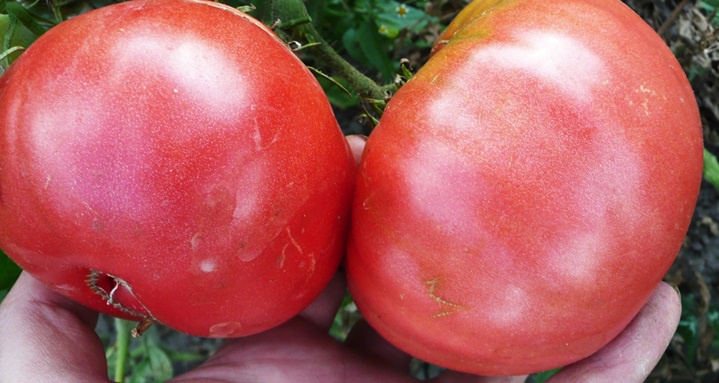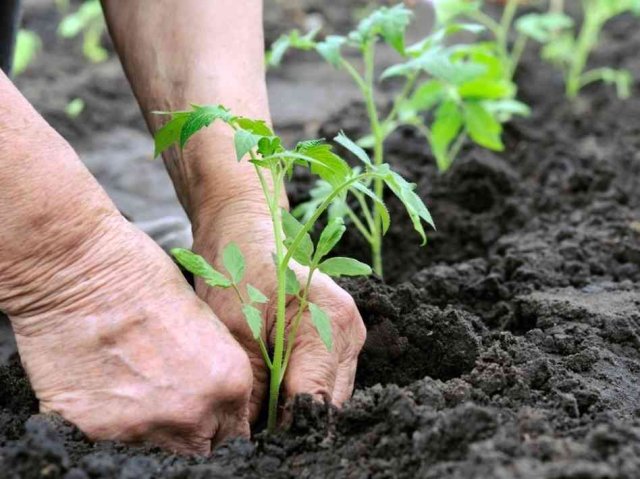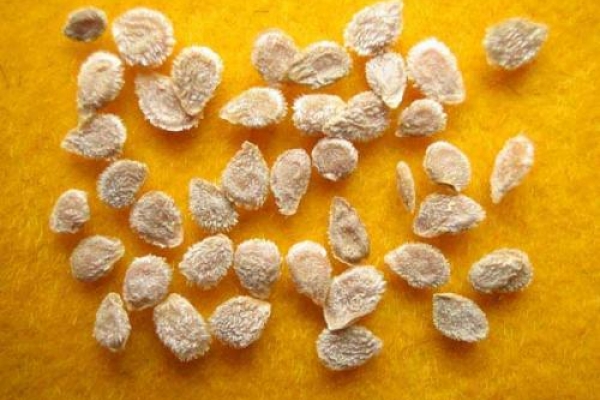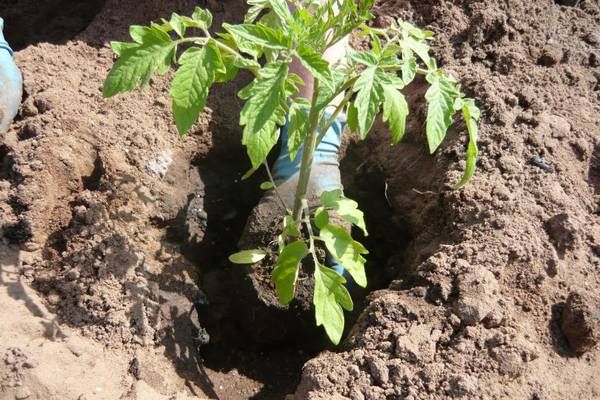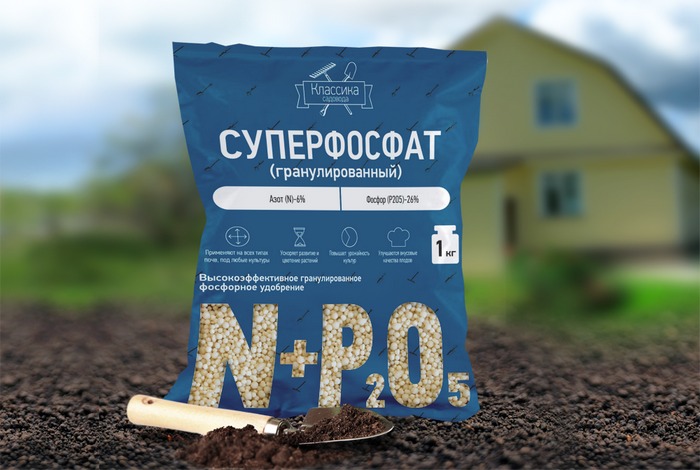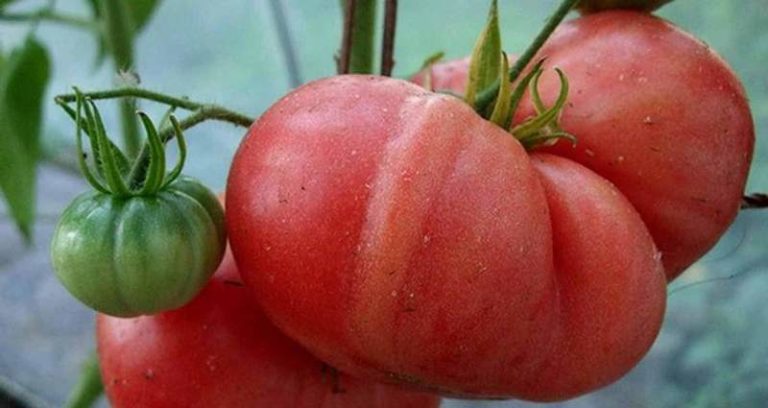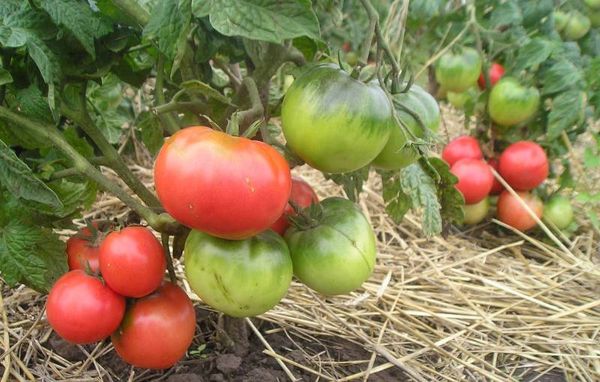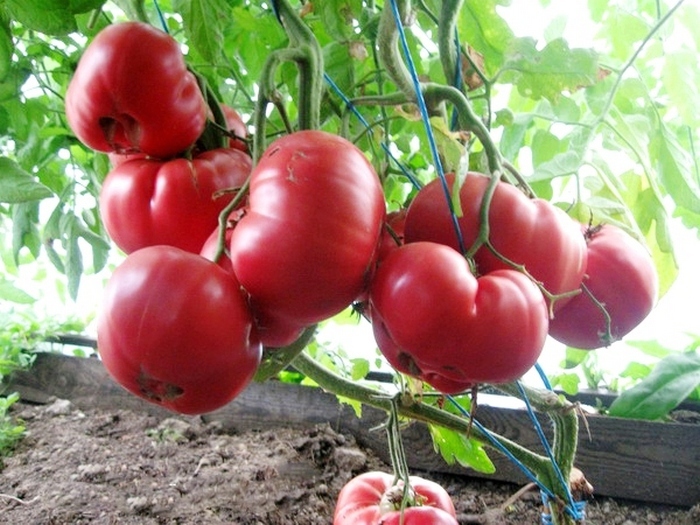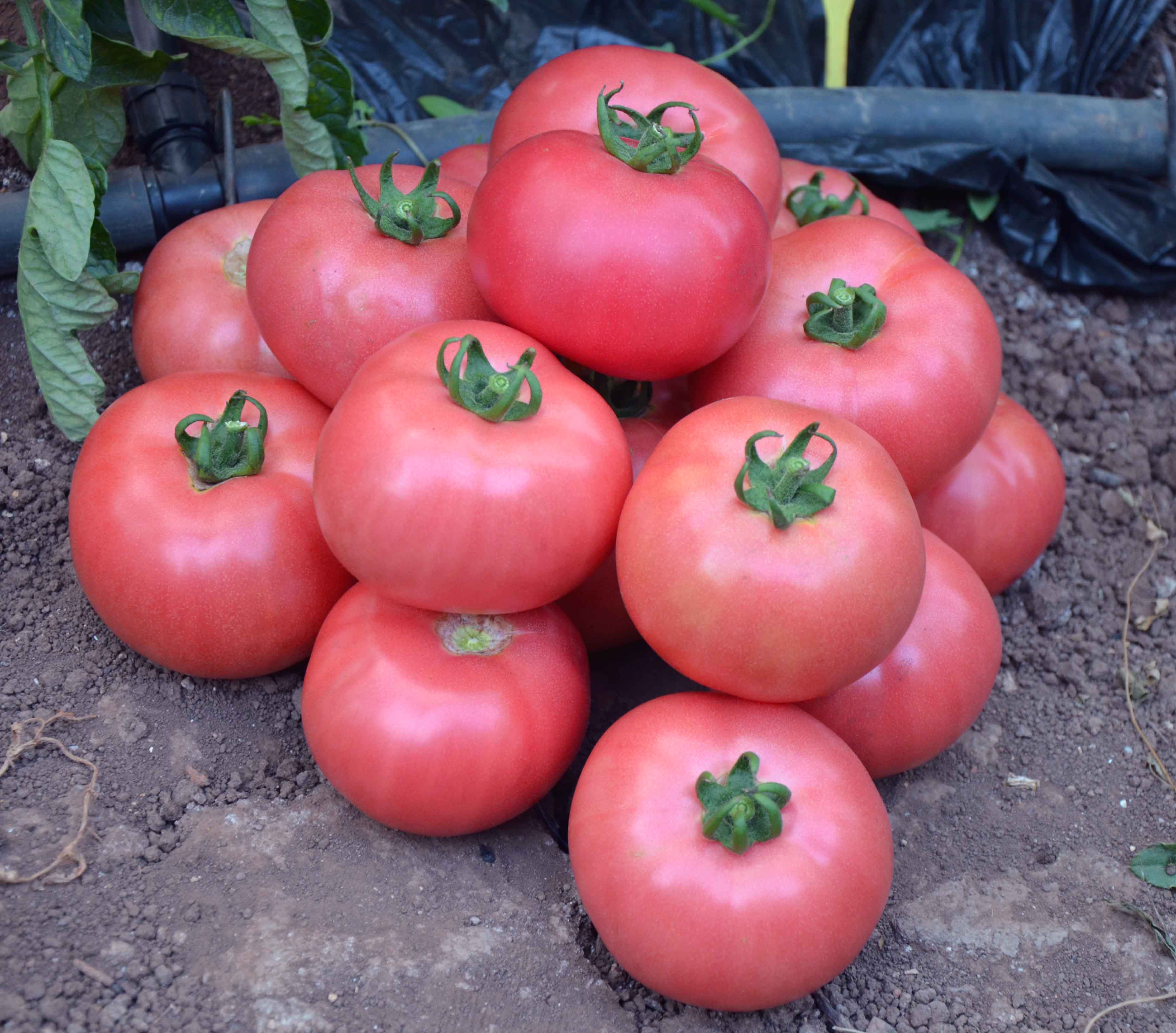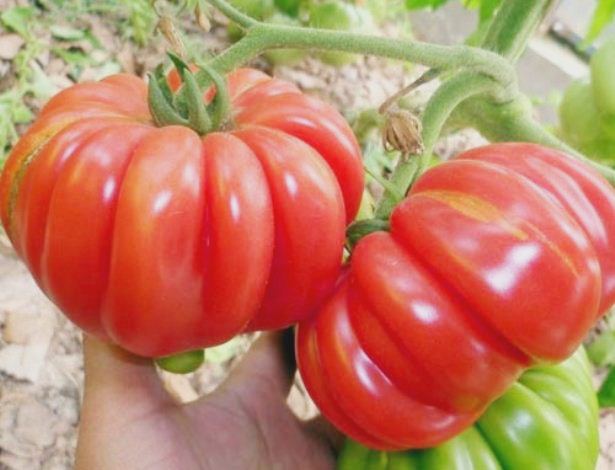Content:
Among the many varieties of tomatoes bred by the Selekitsonera, the most popular are pink species, due to the absence of a sour taste, and a fleshy juicy structure. Among them, it is worth noting the juicy tomato Pink spam, which has all the above qualities.
The history of the creation of the variety
The tomato variety is derived from the classic tomato type Bull's Heart, from which he adopted the characteristics of growth, the heart-shaped shape of the fruit and its size. The variety was entered in the Register as Pink spam F1, breeder - Semko-Junior LLC. Now it is widely cultivated throughout the country of Russia.
Characteristics and features of the variety
Frost resistance
This species is picky about the growing temperature, sowing seeds when the soil warms up to 16 degrees. The optimal sowing time and growth of pink tomato depends on external conditions. This heat-loving variety does not tolerate a sharp drop in temperature, therefore, young seedlings are planted in prepared greenhouses after the return coolness has ceased, with the exception of the southern regions, where seeds are sown in open ground.
Yield
By the ripening time, the sweet vegetable belongs to the early maturing varieties. From the moment of sowing seeds to ripe fruits, it takes 95-100 days. In terms of yield, it is considered fruitful, since up to 25 kg of excellent quality fruits are harvested from one square meter.
Bloom
Delicious Tomato Pink Spam is a self-pollinated variety, like all varieties. Flowering begins in late May and continues throughout the growing season.
Plant parameters
A mature bush has the ability to grow rapidly, its height reaches 1.5 m. For this reason, the top is pinched. The leaves of tomatoes are medium in size, simple in shape.
The variety gives fruits of a pinkish tone, which have a smooth skin, do not crack during canning. Tomatoes are multi-chamber, in a mature state their weight can reach 200 g. The excellent taste of ripe tomatoes allows their use in fresh dishes and home preservation. Tomato of this variety has a short shelf life at home.
Agrotechnics
The guarantee of an excellent harvest depends on the quality of the sprouts used by 50%. In order for the bushes to grow strong and healthy, they observe certain agrotechnical nuances and rules for caring for sprouts. In order to achieve a good result, the formation of a bush is necessary.
Sowing seeds
The optimal time period for sowing seeds is late March, early April. If you plan to plant in greenhouse conditions, then it is better to sow in early April. The seedlings are ready for 1.5 months.
Preparation of land and seeds
Before the selected seeds fall into the soil, the composition must be carefully prepared. For planting, you can purchase ready-made seedling soil or take it from the site where the tomatoes will be planted. In addition to the substrate taken from the site, peat and sifted sand are added. To reduce the acidity of the soil, wood ash is added there. The selected seeds are soaked for 30 minutes in a manganese solution. After that, they are thoroughly washed and dipped into an effective composition of a growth stimulator. The seeds are dried and the potting soil is disinfected.
Sowing seeds
It is comfortable to sow seeds in spacious boxes, plastic containers from pastries with a simple toothpick soaked in water, or with a special manual seeder. A distance of 2 cm is observed between each seed, a 4-cm gap remains between the rows. The seed material is slightly deepened, only 2 cm. After that, the surface is sprayed with warm water, covered with a film or glass. Place boxes with crops in a warm place where there is no wind blowing.
Sprout care
In order to grow a good harvest of tomatoes, some care features must be taken into account. After the sprouts appear, the sealed box is opened, the temperature in the room is maintained at least 23 degrees. Tomato sprouts respond well to picking. 10 days after this manipulation, the culture is fed with life-giving fertilizer.
After 2 weeks, another life-giving feeding follows. Another 2 weeks before direct planting in the prepared soil - the third make-up. Young sprouts are exposed to the street for a short time, adapting them to difficult conditions. Without this mandatory hardening, young shoots in a new place can be very sore.
Landing in open ground
Upon reaching 7 leaves, the hardened seedlings are planted in the ground, and after reaching 20 cm in height they are planted on a prepared bed. They make a landing from May 20 to June 15. These terms are individual and depend on specific external conditions.
In the fall, they prepare a substrate, a site for planting. For this, the earth is dug up, fertilizing it with manure. Poor precursors to tomatoes are eggplant, bell peppers, and sweet potatoes. These crops have a similar susceptibility to dangerous diseases. The best crop rotation option would be spicy onions, zucchini, and cabbage. The accepted planting scheme is 50 * 50 cm.With sufficient free space, young shoots are planted at a distance of 70 cm.
Care
Systematic crop care includes the following actions: periodic weeding, high-quality loosening to provide the roots with life-giving oxygen. Forming and tying a bush for this tall variety is required. Adult shrubs are provided with quality watering twice a week. Then they make sure that moisture gets exclusively under the root. When the sprouts take in and grow, they are given complementary foods. As such, you can use natural organic matter, purchased minerals. Pinch the top, leaving the desired height. To get the maximum yield, a bush is grown in two stems. For this purpose, strong stepsons are left under the lower flower brush.
Top dressing
As with all crops, the tomato also needs some nutrition. Useful compounds are introduced into open ground once a month. During the active growth of leaves and succulent shoots, the bushes simply need a dose of useful nitrogen. During active flowering, life-giving superphosphate and potassium salt are required. All these components have a good effect on the growth of young ovaries, increase resistance to major diseases of the culture.
Diseases and pests
As a rule, harmful pests do not attack a tomato. Late blight is the most common disease. To prevent infection of the bush with dangerous bacteria, preventive insecticide treatment is carried out. Effective phytosporin has a good effect in the fight against dangerous diseases. This tool is used to treat the soil surface on the eve of planting.
Harvesting
3 months after planting in open ground, gardeners receive the fruits of their labor - ripe tomatoes. It is necessary to pick smooth tomatoes in the evening when the sun has already set. The fruits are plucked as they ripen. Ripe tomatoes take away the strength of their green "brothers".
Application
Ripe tomato is suitable for fresh application. The juicy, fleshy flesh is ideal for making healthy meals. One impressive tomato is enough to make a serving of salad. It goes well with light cheese, canned olives, hot garlic. An excellent juice is obtained from these specimens, rich in valuable vitamins.
Advantages and disadvantages of the variety
Gardeners fell in love with Pink f1 spam and appreciated its beneficial properties, namely:
- Great sweet taste without characteristic acid;
- Excellent resistance to transportation;
- Resistance to cracking during heat treatment;
- Simultaneous ripening and increased yields;
- Rich in life-giving substances.
Delicious tomato Pink spam, the characteristics and description of the variety of which were disclosed earlier, has certain drawbacks, among them gardeners note the pretentiousness of the variety to care, short storage times, susceptibility to harmful late blight. But despite this, farmers continue to breed it, getting good harvests of sweet fruits. Proper care and timely application of maintenance compounds are the main components of successful cultivation of sweet tomatoes.
